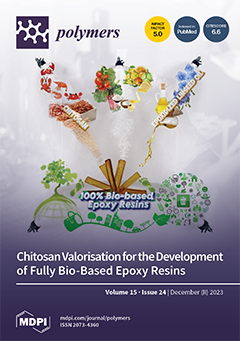The metallo-supramolecular polymer (MSP) is considered one of the most promising electrodes for electrochromic devices due to its intrinsically stable redox properties. Nevertheless, despite extensive work focusing on improving the electrochromic and electrochemical properties of MSPs, little experimental evidence exists from in-depth investigations
[...] Read more.
The metallo-supramolecular polymer (MSP) is considered one of the most promising electrodes for electrochromic devices due to its intrinsically stable redox properties. Nevertheless, despite extensive work focusing on improving the electrochromic and electrochemical properties of MSPs, little experimental evidence exists from in-depth investigations on the anion-induced electrochromism of MSPs. Herein, Ru-based metallo-supramolecular polymer (polyRu) films with excellent electrochromic performance were fabricated through a novel electrochemical deposition method, and the electrochromic mechanism was further understood. The polyRu films possess fast reaction kinetics with a short switching time of 4.0 s (colored) and 2.8 s (bleached) and highly reversible redox properties due to the resulting impacts on the capacitive behaviors (containing surface, near-surface and intercalation pseudo-capacitance) of the perchlorate ions in the electrochromic process. Moreover, the electrochromic degradation of the polyRu films is considered to stem from the numerous nanopores in the film induced by ClO
4− transport and the exchange of counter anions from Cl
− to ClO
4−. In addition, a physical model, revealing the transport of conduction ions and the evolution of the structure and properties of the polyRu film during the electrochromic process, is presented. It is observed that the charge balance of Ru
3+ and Ru
2+, achieved through the adsorption/desorption of ClO
4− on the film, provides electrochromic and electrochemical reversibility to the polyRu film under positive/negative bias. Correspondingly, a transformation from polyRu·(Cl
−)
2n to polyRu·(ClO
4−)
x(Cl
−)
2n−x in the polyRu film is induced by a counter anion exchange from Cl
− to ClO
4−. Revealing the detailed perchlorate ion transfer kinetics and electrochromic mechanism in this film can offer new insights into the application of metallo-supramolecular polymers in electrochromic devices.
Full article






